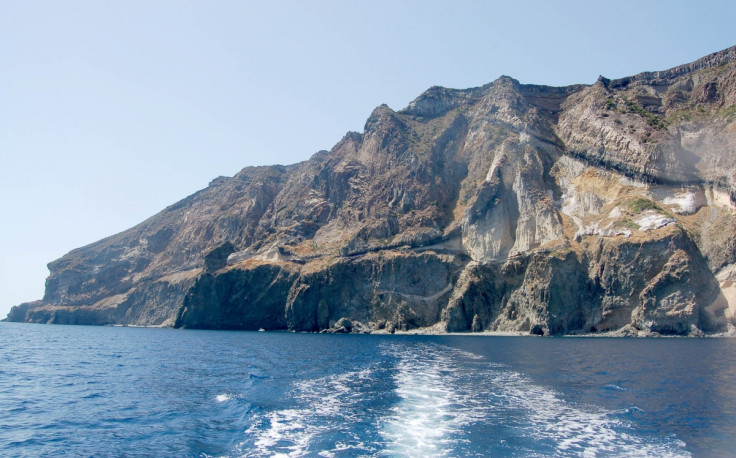Pantelleria: Volcanic Island Entombed in Green Glass 'Provides Clues About Yellowstone's Future'

A tiny volcanic Italian island lying between Sicily and Tunisia was once covered in a layer of green glass, scientists have discovered.
The island of Pantelleria has an area of 83 square kilometres (32sq/m) and lies around 60km from Sicily. While it now attracts tourists from around the world, the island was covered in a searing hot layer of glass 45,000 years ago.
Volcanologists from the University of Leicester looked at how a cloud of hot gasses and volcanic dust spread across the island from the erupting volcano.
Their findings showed how this event was not a one-off and that it could provide answers about the future of other volcanoes, such as that in Yellowstone National Park.
Speaking about Pantelleria, Mike Branney explained: "Incandescent rock fragments suspended in the all-enveloping volcanic cloud were so hot, molten and sticky that they simply fused to the landscape forming a layer of glass, over hills and valleys alike.
"The hot glass then actually started flowing down all the slopes rather like sticky lava.'Ground zero' in this case was the entire island -- nothing would have survived -- nature had sterilized and completely enamelled the island."
Published in the journal Geology, the team mapped out the chemistry of the glass, looking at how it varied from place to place.

Findings showed how the ground-hugging current was at first restricted to low-lying central areas, but then gradually spread out towards the hills, eventually entombing the entire island.
The current then retreated from the hill tops so that by the end of the eruption, only lower ground near the volcano was still covered in glass.
"Today Pantelleria is verdant and has been re-colonised, but even as you approach it by ferry you can see the green layer of glass covering everything - even sea cliffs look like they've been draped in candle wax. Exactly how this happened has only recently come to light," Branney said.
The scientists say this advance-retreat behaviour could be typical of other volcanoes and may provide clues about undersea currents triggered by earthquakes.
"We are trying to ascertain whether this volcanic eruption was just a freak, oddball event. Well, it turns out that the delightful island, now used as a quiet getaway by celebrities, has been the site of at least five catastrophic eruptions of similar type.
"The remarkable volcanic activity on the island was not just a one-off. And as the volcano continues to steam away quite safely, it seems reasonable that in thousands of years' time, it may once again erupt with devastating effect.
"Our investigations should help us understand what happens during similar and much larger explosive eruptions elsewhere around the world, such as the Yellowstone-Snake River region of USA."
© Copyright IBTimes 2025. All rights reserved.






















